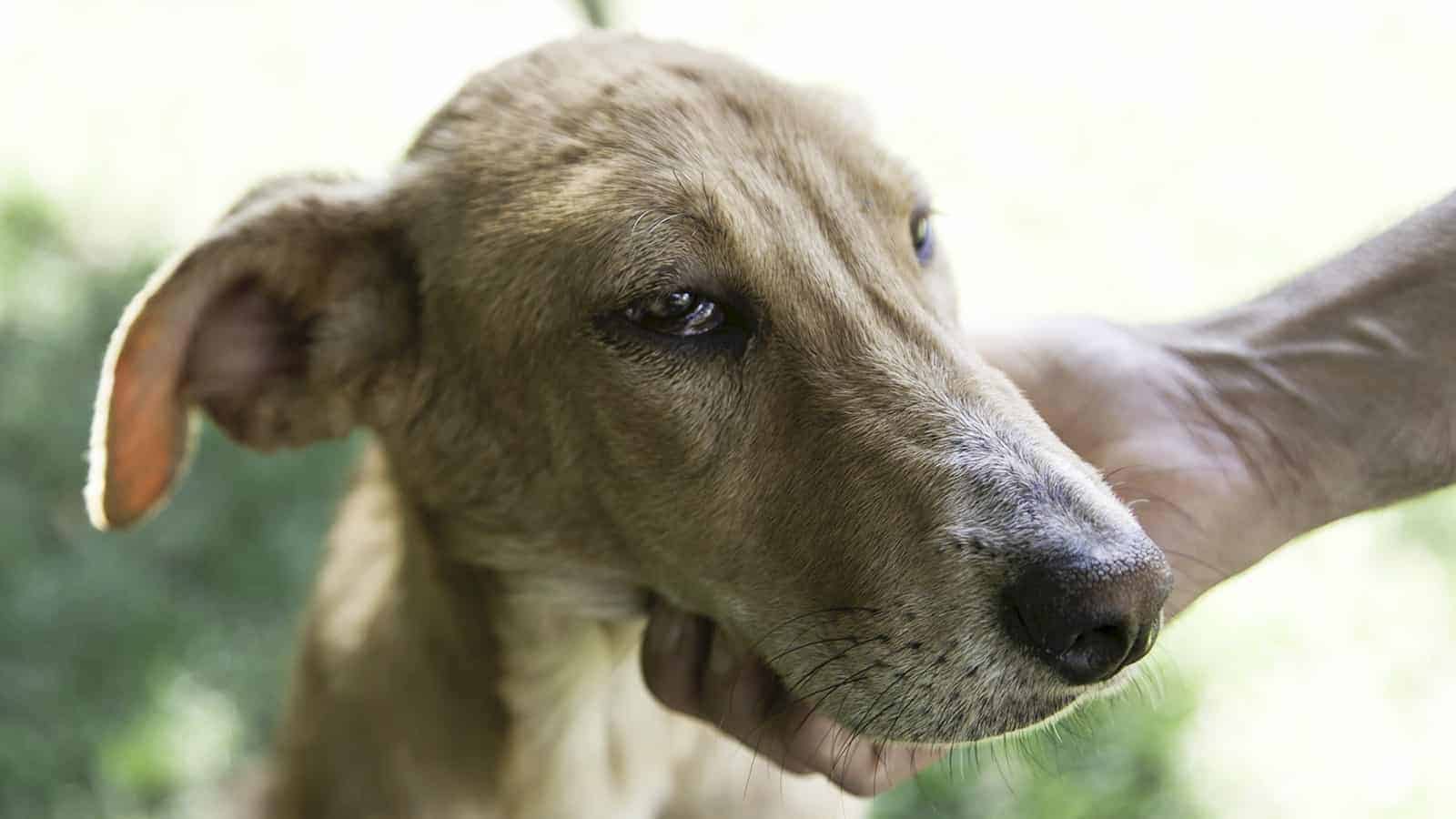Tragically, animal cruelty is an all-too-common occurrence.
While the most shocking cases of cruelty to animals may grab media headlines, these heartbreaking stories are rarely enough in themselves to bring the necessary awareness and education to help.
In fact, most incidents of animal cruelty never get reported to authorities. Complicating this issue is the fact that neither U.S. federal or state law bodies keep up-to-date data pertaining to cases of cruelty to animals. This perplexing omission by law enforcement agencies makes it impossible to know just how widespread these problems are.
What is animal cruelty? How does one define it? How can we stop it? Besides discussing the significance of Virginia’s new legislation, we’ll also address these questions and other relevant topics.
What Is Animal Cruelty?
Animal cruelty, also referred to as animal abuse, animal neglect, or cruelty to animals, is committing an act that results in the suffering of a non-human being. Animal cruelty can be one of omission (neglect), commission (emotional, physical, or verbal abuse), or both.
At times, animal cruelty is subjectively defined as killing an animal for human purposes of clothing, food, or something else. Some view the use of animals for purposes of education, entertainment, and research as acts of animal cruelty.
Most people fall somewhere in the middle of these two positions. Those concerned with animal welfare, for example, typically do not condemn the use of animals for specific human purposes, including in the production of food and certain forms of entertainment (e.g. zoo exhibits).
Determining the stance of many is their perspective on animal rights. Do animals have rights? If so, what are they? Should they receive protection under the law? Should they hold the same rights as humans? Of course, these issues are rife with contention and debate.
Types of animal cruelty may include:
- Cultural rituals: “breaking,” sacrifices, taming, etc.
- Entertainment: bullfighting, cinematic props, cockfighting, dogfighting, circuses, and zoos, etc.
- Industrial: farming: branding, castration, restraint, tagging, etc.
- Neglect: abandonment, malnutrition, unsanitary living conditions, etc.
- Physical abuse: constriction, suffocation, striking, throwing, etc.
- Scientific experimentation: unnecessary use of animals for scientific research purposes.
Animal Cruelty Facts
According to the Humane Society of the United States, here are some known facts about animal cruelty in the U.S.:
- Cats, dogs, horses, and livestock are the most commonly reported victims of animal abuse. Reports of violence against livestock (e.g. cattle, pigs, etc.) rarely ever get prosecuted.
- Men under the age of 30 are the most likely to commit acts of animal violence.
- Women over the age of 60 are most likely to hoard animals – an act of animal neglect.
- Intentional acts of animal cruelty correlate highly with other forms of abuse, including child abuse and domestic violence.
- Dogfighting is reported in areas all over the United States, including rural, densely populated communities.
- An estimated 900 to 2,000 cases of animal hoarding get reported every year.
- Every popular circus venue in the United States has been cited for failing to comply with minimum animal welfare standards.
- Over 115 million animals – including intelligent or domesticated species like cats, dogs, and monkeys – die every year for laboratory experimentation purposes.
 “Tommie’s Law”
“Tommie’s Law”
“We have heard from folks all over the commonwealth who share our belief that anyone who intentionally tortures a dog or cat is a threat to public safety and should be dealt with severely.” – Bill DeSteph, State Senator of Virginia
Virginia became the latest U. S. state to make animal cruelty a felony. Prior to the law’s passage, which goes into effect on July 1, 2019, an animal had to die from its injuries to classify as a felony in the state. This definition now extends to include any person who “tortures, willfully inflicts inhumane injury or pain,” or “cruelly and unnecessarily beats, mains or mutilates any dog or cat.” Like so many human achievements, this one also came out of the ashes of tragedy.
The beating of a dog named Sugar in Virginia Beach resulted in the Commonwealth of Virginia tightening up animal cruelty legislation already on the books. Sugar was found beaten, maimed, and severely injured in Virginia Beach in 2016. The authorities arrested the offender; however, because the animal lived, the maximum sentence called for no longer than one year in jail and a $2,500 fine.
It was only after the tragic case of a Pitbull named Tommie when the Virginia government introduced legislation that would come to be known as “Tommie’s Law.”
(Please read: graphic and potentially disturbing description forthcoming. Please move onto the section The State of Animal Rights if so inclined.)
Virginia police officers determined that the young Pitbull was tied to a pole, doused with gasoline and set on fire on February 10, 2019. Richmond Animal Control quickly rescued the severely injured dog, but the animal died five days later. Shortly after that, Senator Bill DeSteph of Virginia’s 8th district introduced legislation that effectively established that anyone who commits an act of cruelty against animals is subject to a felony charge and conviction.
The law passed without one “nay” vote by both the House of Delegates and Senate. Virginia’s governor, Ralph Northam, signed it into law. The law made Virginia the 48th U.S. state to make certain acts of animal cruelty a felony offense. (Washington D.C. and U.S. territories Puerto Rico and the U.S. Virgin Islands have done the same.)
The State of Animal Rights
One of the nation’s preeminent animal rights advocacy groups, the Animal Legal Defense Fund (ALDF), ranks the animal protection laws of all fifty states based on a review of nineteen criteria deemed to be critical for the enforcement of animal protection. The ALDF releases the “U.S. Animal Protection Laws Rankings Report” once per year. The latest release, on in early January of 2019, marks the 13th report to date.
Here are some of the key findings from the ALDF feature:
- The top five states for animal rights included the following: Illinois, Oregon, Maine, Colorado, and Massachusetts.
- The bottom five states were these ones: New Mexico, Wyoming, Iowa, Mississippi, and Kentucky.
- Illinois has ranked as the best state for animal protection for the second straight year.
- Seven states with possession bans – the prohibition of convicted animal abusers from owning or living with a pet – either created or strengthened existing bans in 2018.
- Animal protection laws have evolved significantly over the past decade.
- Louisiana has improved the most, jumping 14 spots from #21 to #7, followed by Massachusetts, which jumped nine spots, from #14 to #5.
- Internationally, just four countries – Austria, New Zealand, Switzerland, and the United Kingdom – receive an “A” grade concerning animal rights and welfare. (What about the U.S.A.? We get a “D.”)
The nation of Austria deserves mention here. In Austria, the Animal Welfare Act of 2004 outlaws the pain and suffering of all animals with the limited exception of activities related to fishing and hunting. Some go so far as to say that the law regards the safety and wellbeing of animals at a level that equals human rights!
The worst countries for animal rights and welfare? Azerbaijan, Belarus, and Iran.
Final Thoughts: Education is the Answer to Stop Animal Cruelty
“Non-violence leads to the highest ethics, which is the goal of all evolution. Until we stop harming all other living beings, we are still savages.” – Thomas Edison (source)
Why do individuals harm animals? This is a complicated answer; one that assuredly touches on things like psychology, environment, bullying, and education. It is the last factor, education, where we just might make the most significant impact if done right. While society may not be able to solve the psychological issues affecting animal abusers, we can certainly make a difference in the safety and wellbeing of other species by investing in education.
Consider animal cruelty classified as “acts of omission,” defined as “…cases of neglect, where the crime is a lack of action rather than the action itself.” What are such inactions? Dehydration, starvation, poor immunization record, low-quality shelter, parasite infections, preventable illnesses, and lack of supervision.
So notice that all of the above are rectifiable through basic animal education. The question then becomes “How?” Well, one idea is to require animal education classes for first-time pet owners. Would you still buy a dog or cat if you had to take a short online course teaching you how to care for it?
We can solve these issues, provided we have the will to see things through. In a perfect world, people would see animals for what they are – vital parts of our planet as well as our lives. In the meantime, we can do our part by working to eliminate ignorance. We can also take responsibility for any concerning behavior toward animals that we might witness. Finally, we can care for our own pets by treating them with love and compassion.





















